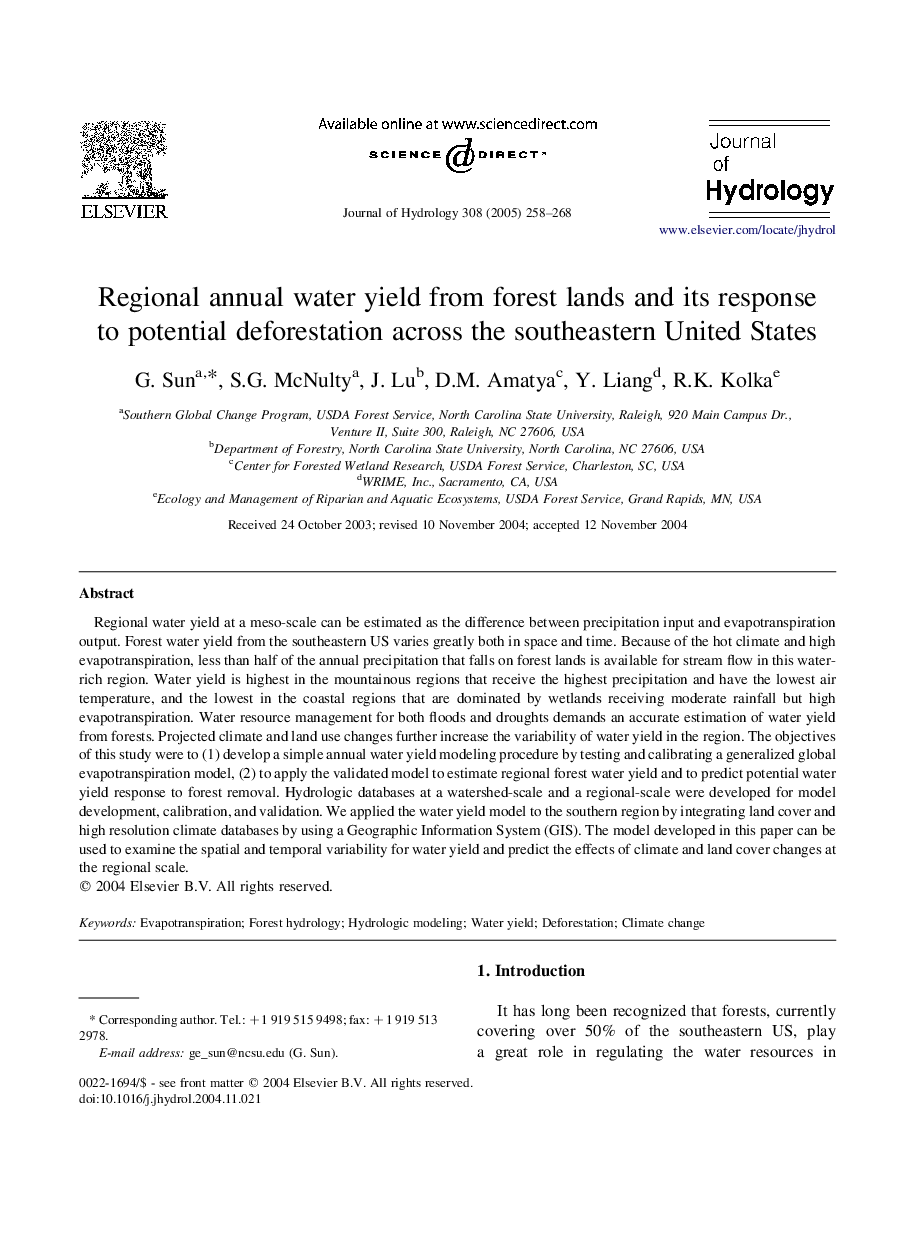| Article ID | Journal | Published Year | Pages | File Type |
|---|---|---|---|---|
| 9491462 | Journal of Hydrology | 2005 | 11 Pages |
Abstract
Regional water yield at a meso-scale can be estimated as the difference between precipitation input and evapotranspiration output. Forest water yield from the southeastern US varies greatly both in space and time. Because of the hot climate and high evapotranspiration, less than half of the annual precipitation that falls on forest lands is available for stream flow in this water-rich region. Water yield is highest in the mountainous regions that receive the highest precipitation and have the lowest air temperature, and the lowest in the coastal regions that are dominated by wetlands receiving moderate rainfall but high evapotranspiration. Water resource management for both floods and droughts demands an accurate estimation of water yield from forests. Projected climate and land use changes further increase the variability of water yield in the region. The objectives of this study were to (1) develop a simple annual water yield modeling procedure by testing and calibrating a generalized global evapotranspiration model, (2) to apply the validated model to estimate regional forest water yield and to predict potential water yield response to forest removal. Hydrologic databases at a watershed-scale and a regional-scale were developed for model development, calibration, and validation. We applied the water yield model to the southern region by integrating land cover and high resolution climate databases by using a Geographic Information System (GIS). The model developed in this paper can be used to examine the spatial and temporal variability for water yield and predict the effects of climate and land cover changes at the regional scale.
Keywords
Related Topics
Physical Sciences and Engineering
Earth and Planetary Sciences
Earth-Surface Processes
Authors
G. Sun, S.G. McNulty, J. Lu, D.M. Amatya, Y. Liang, R.K. Kolka,
